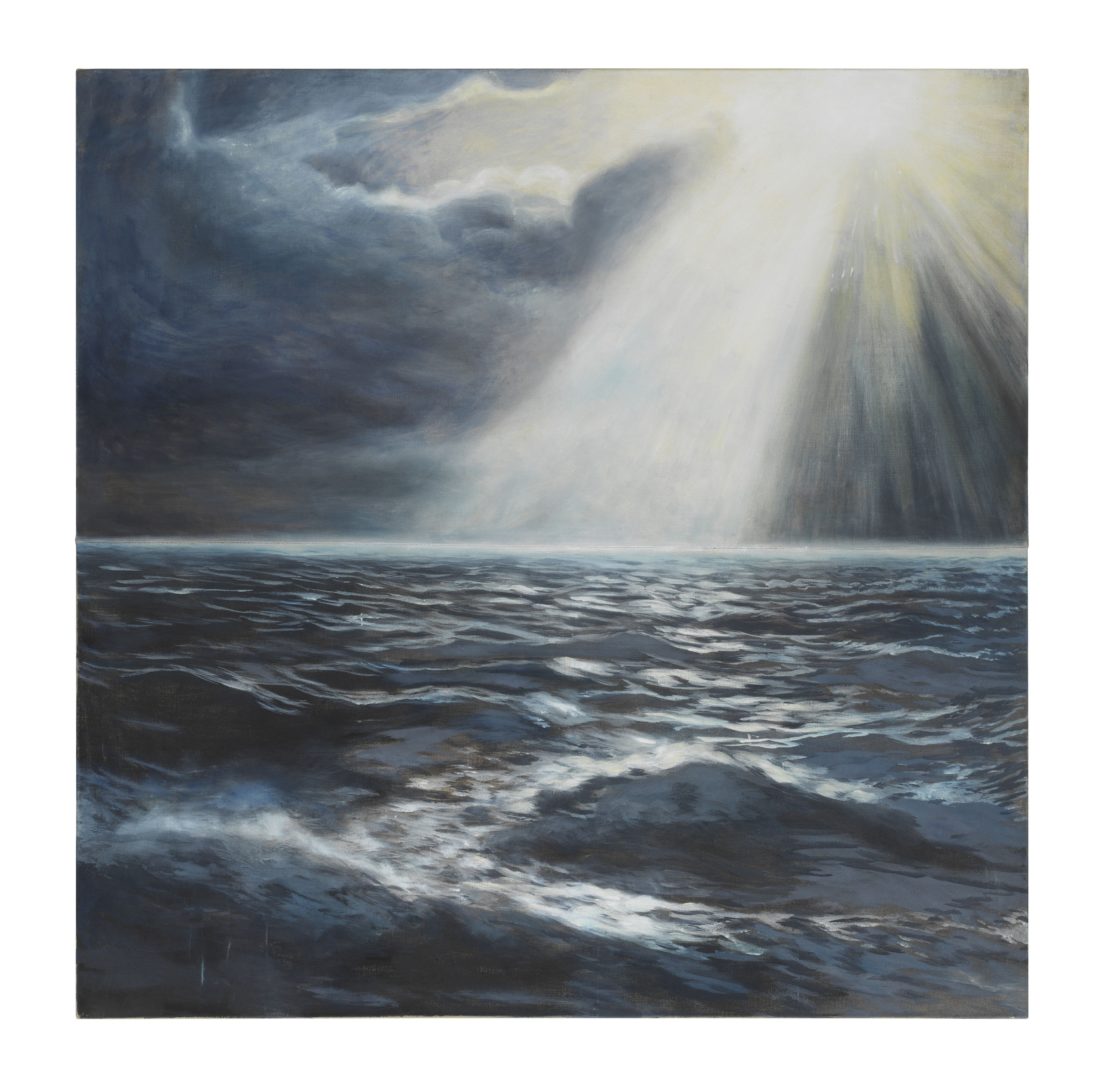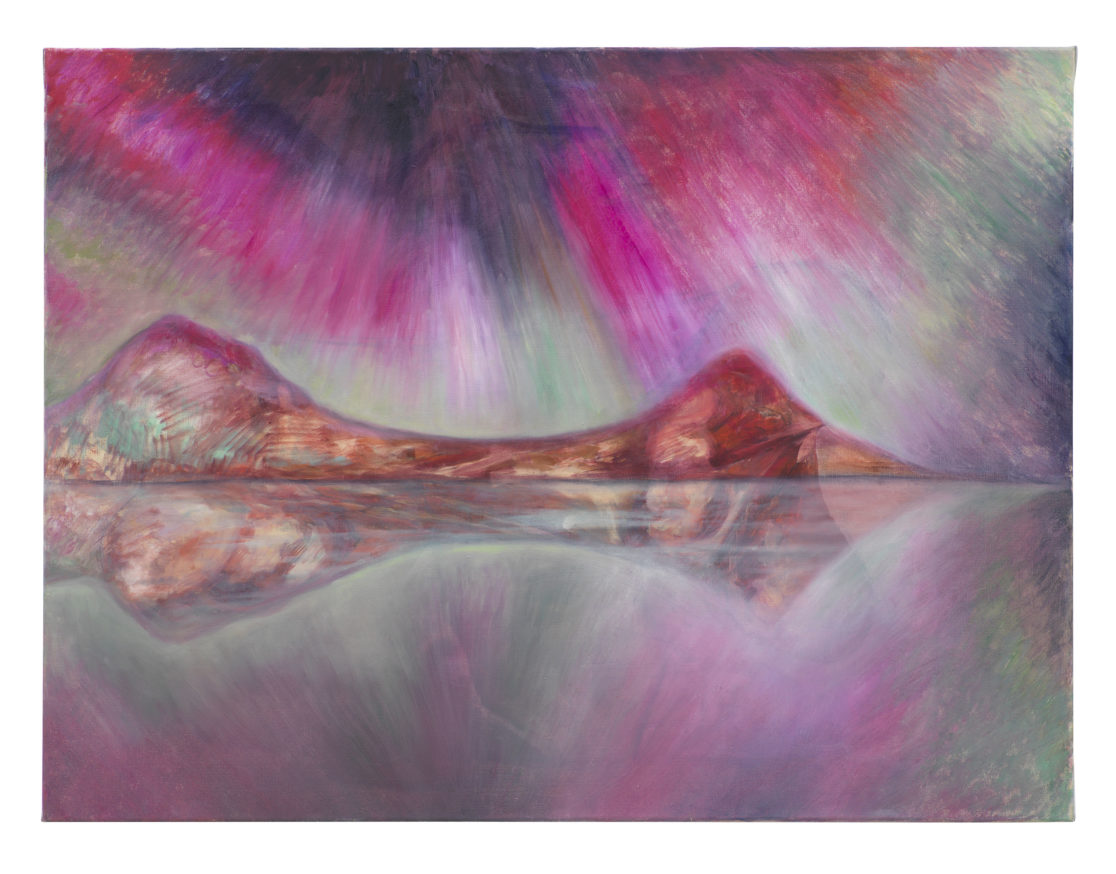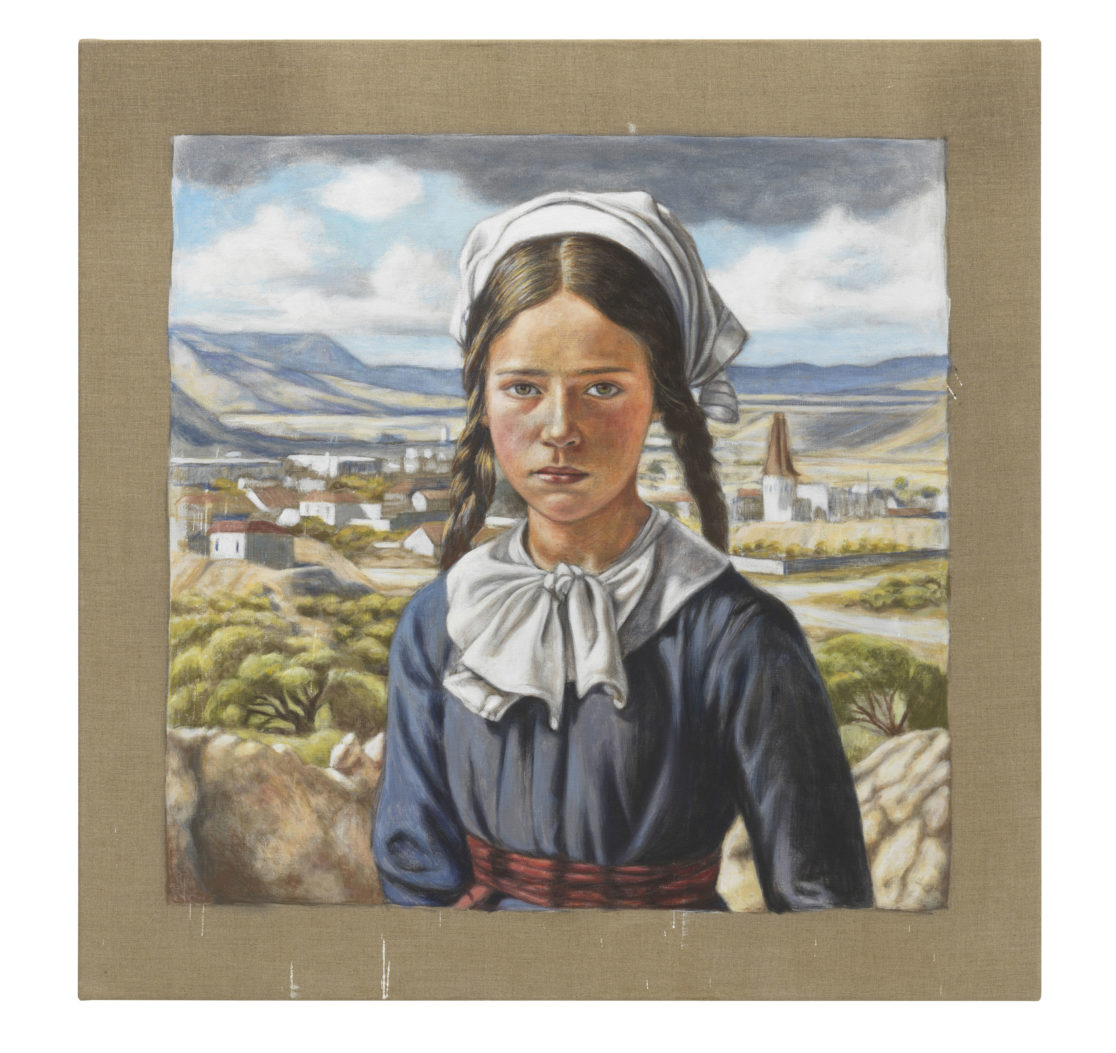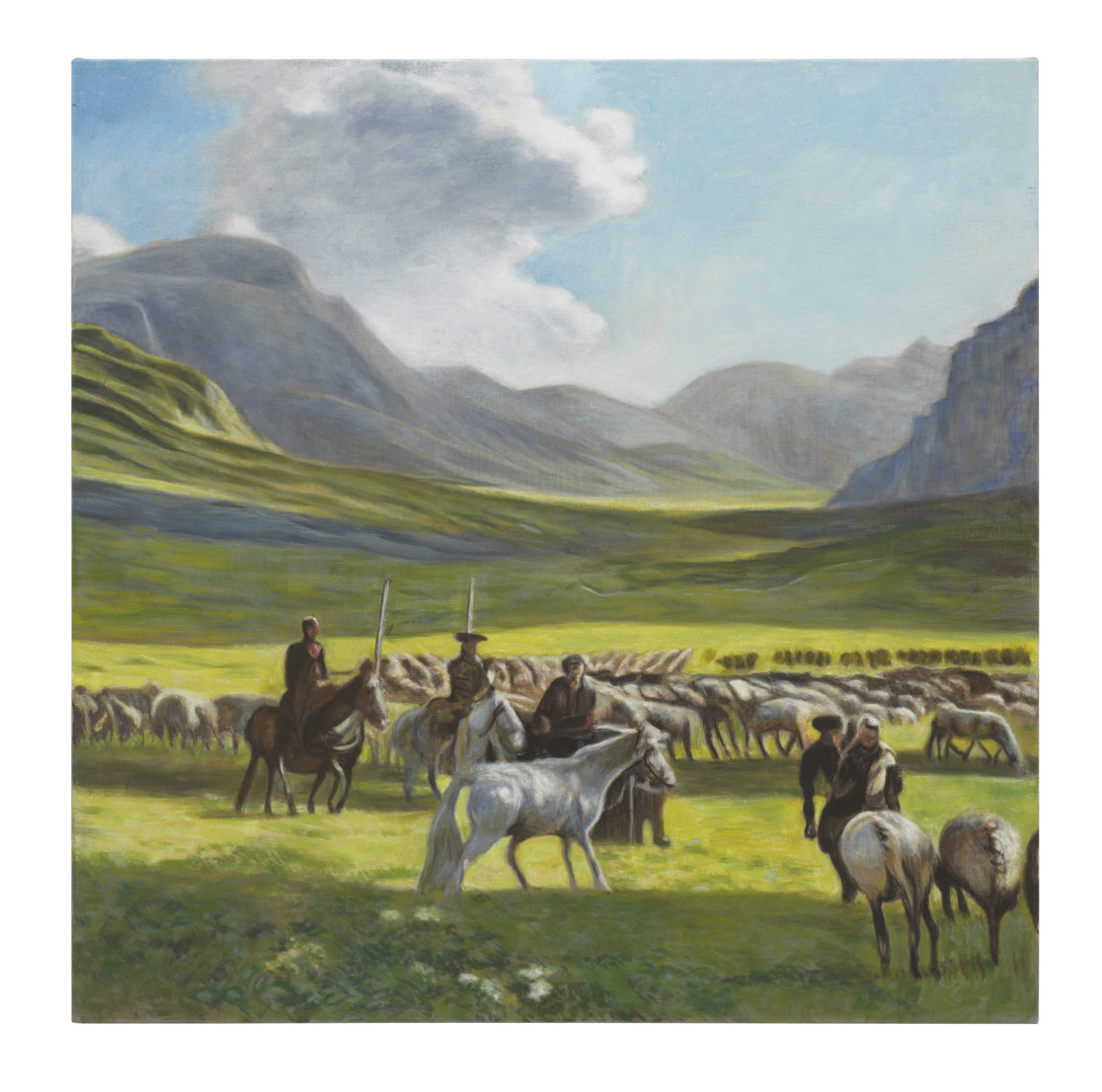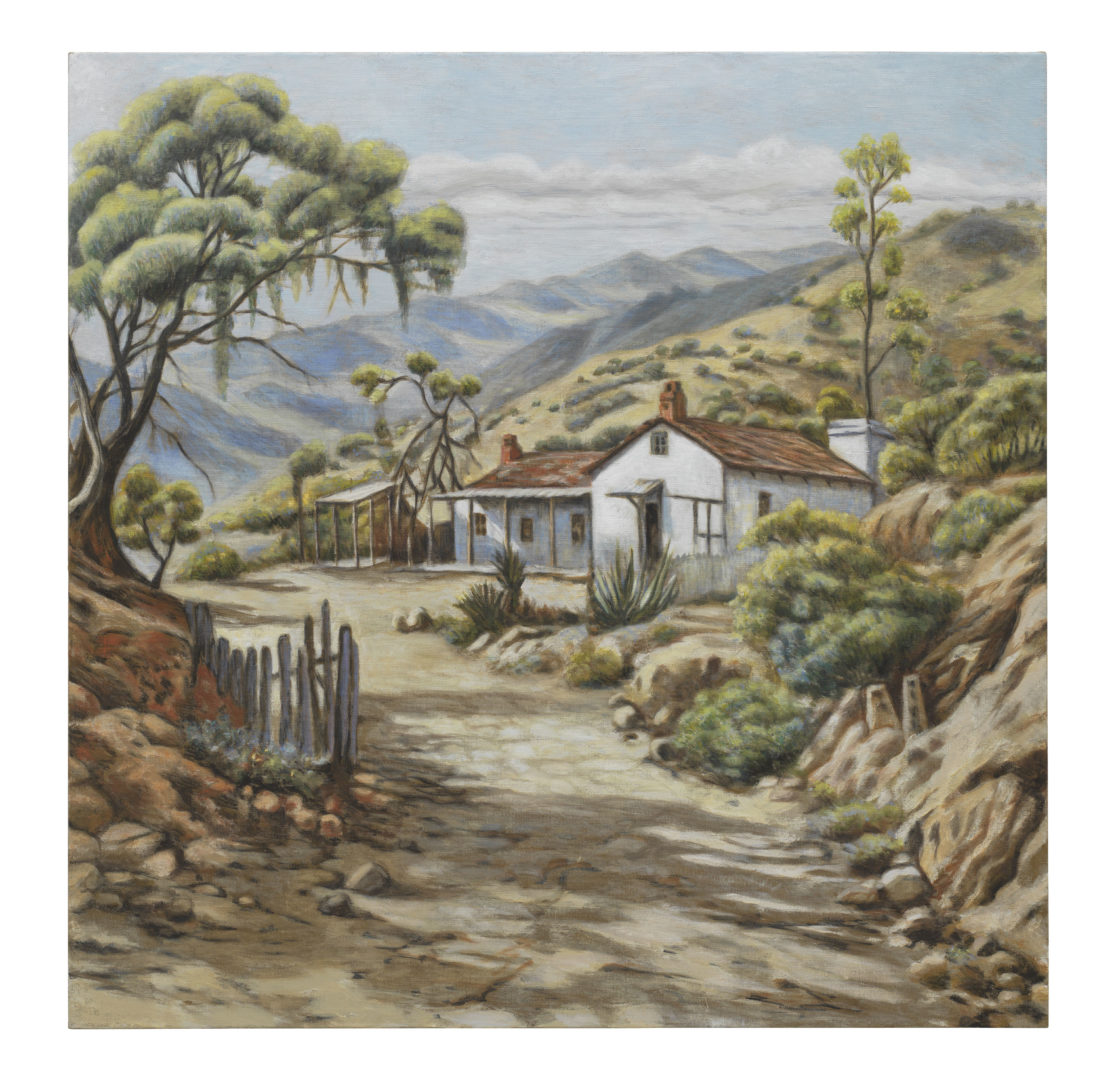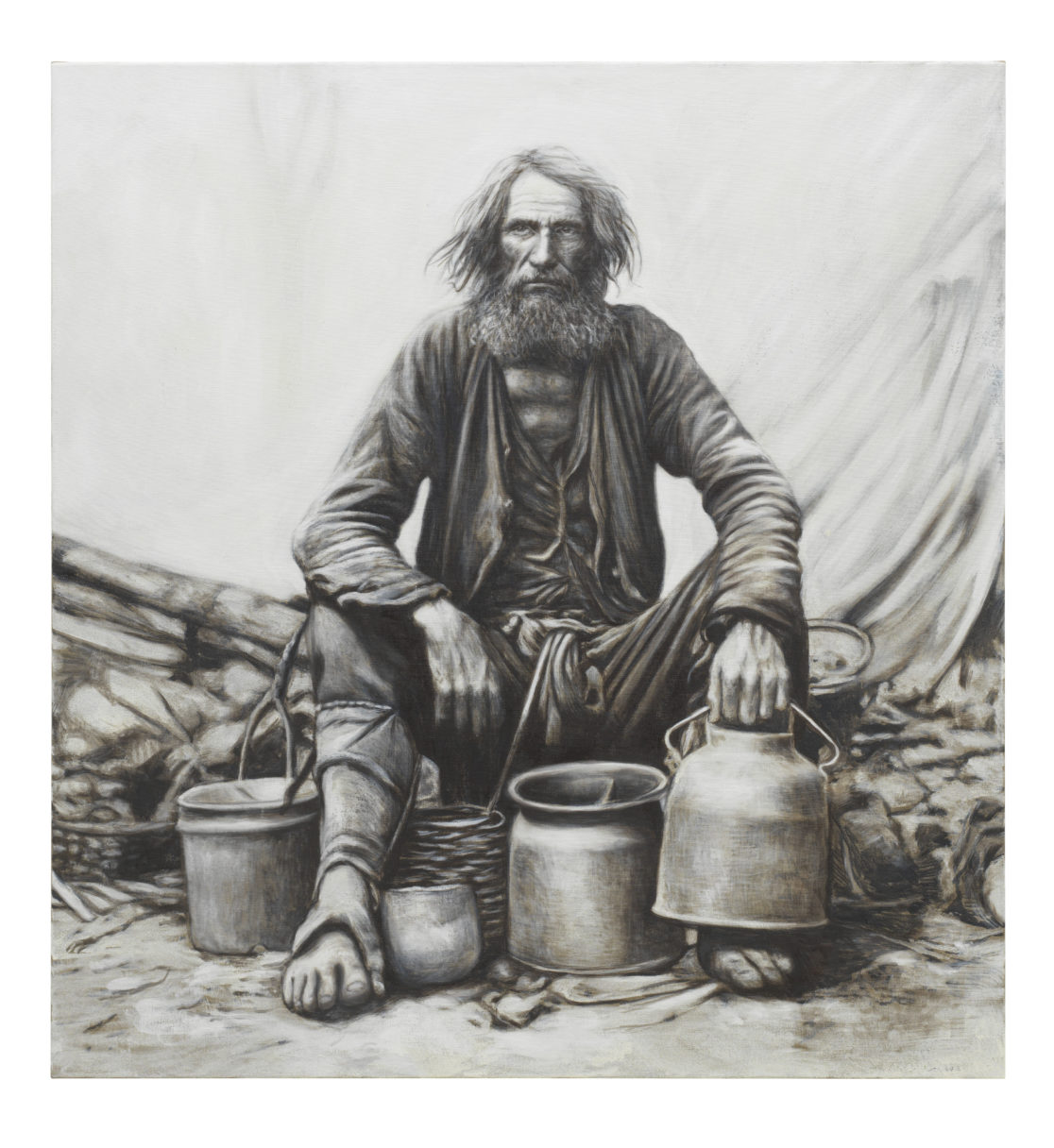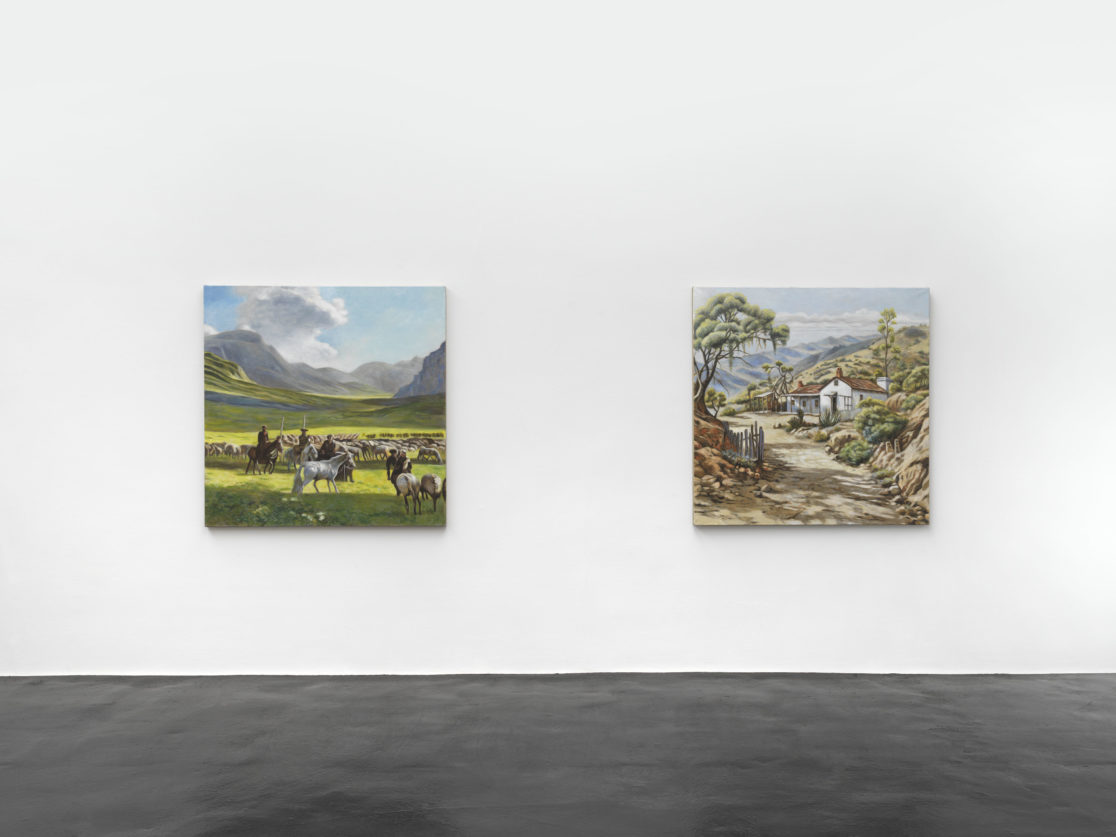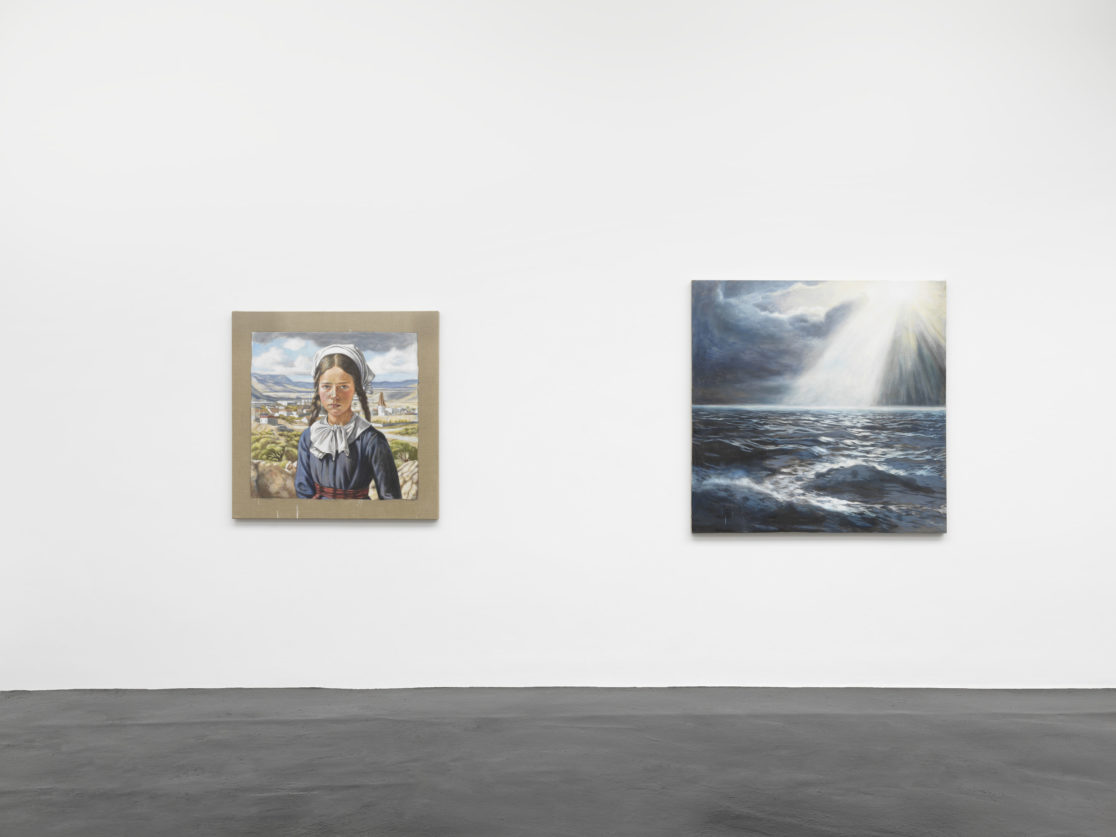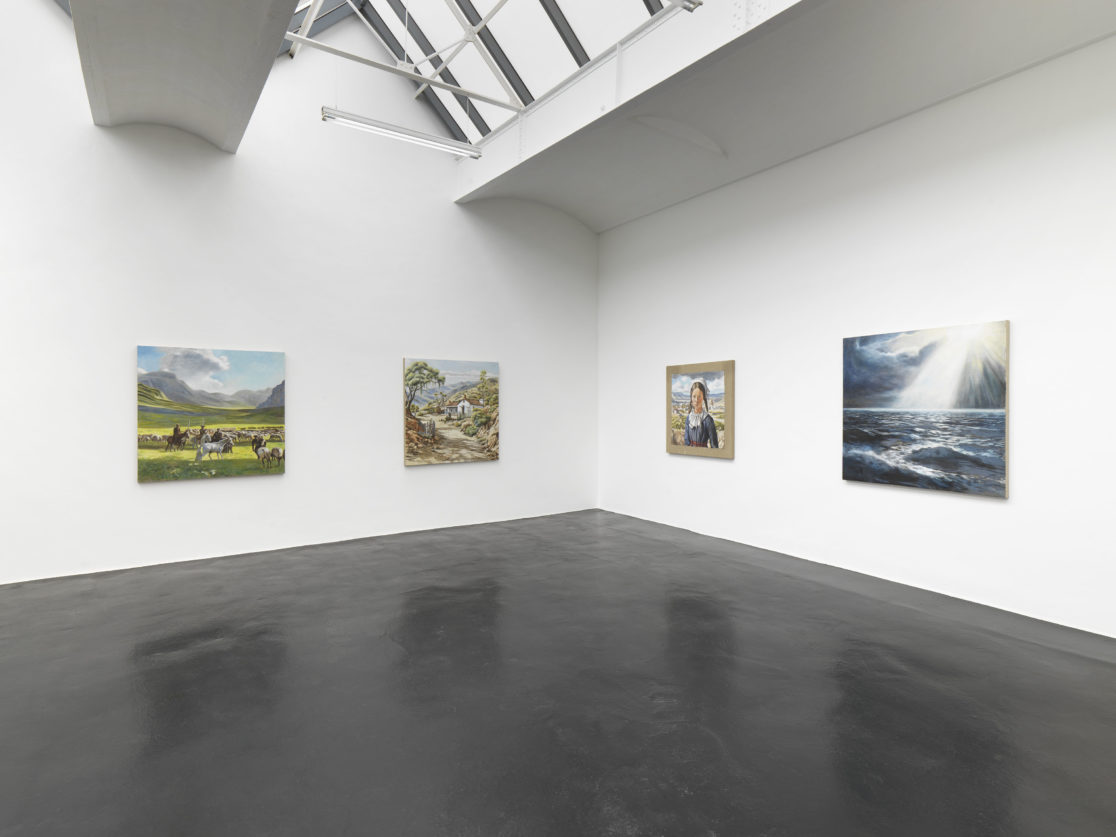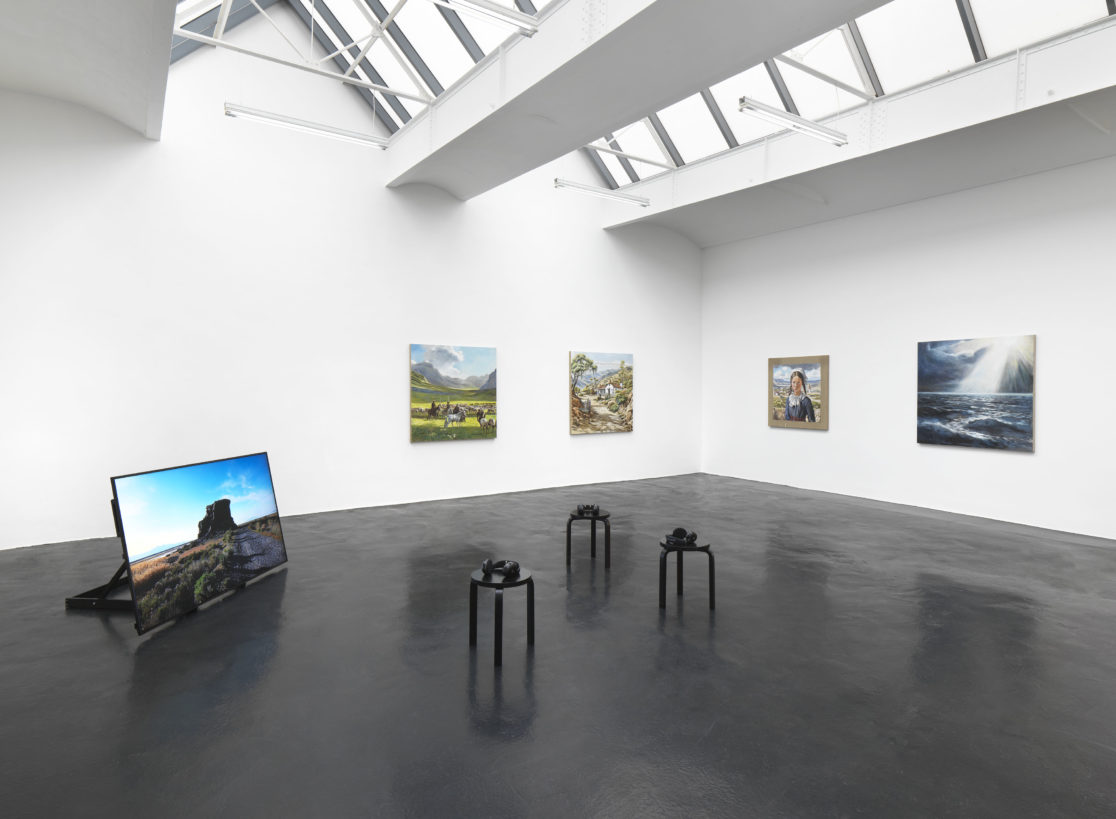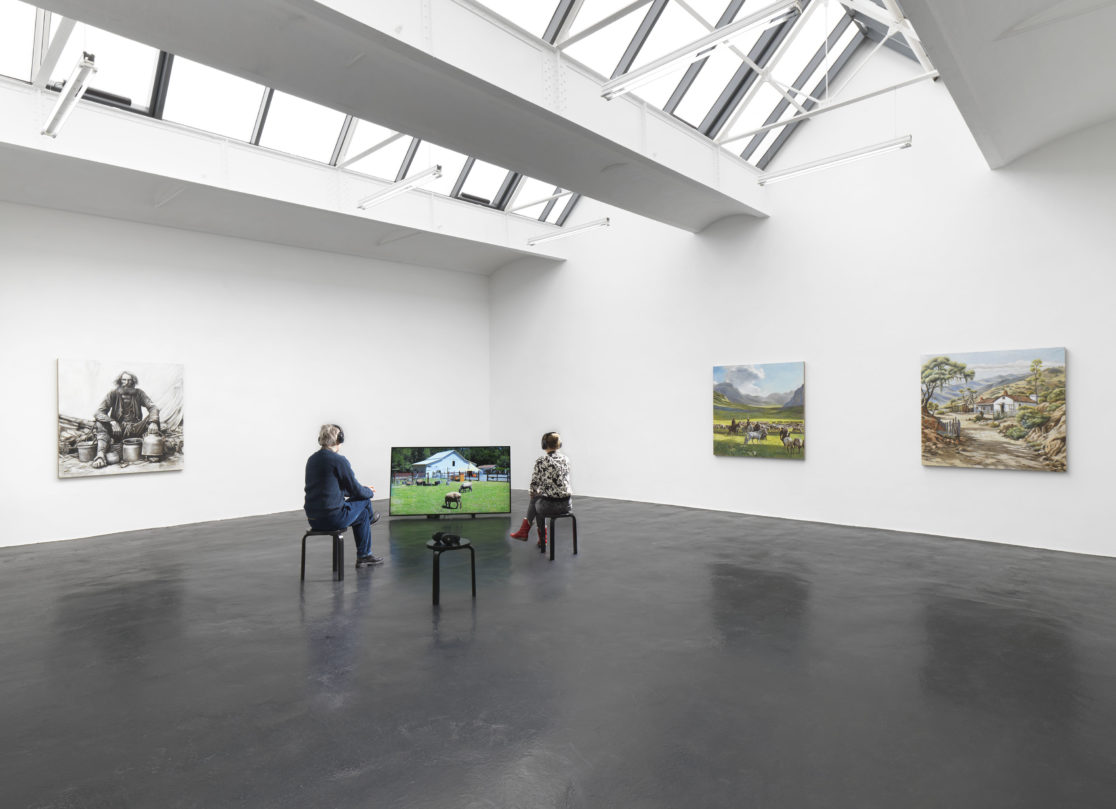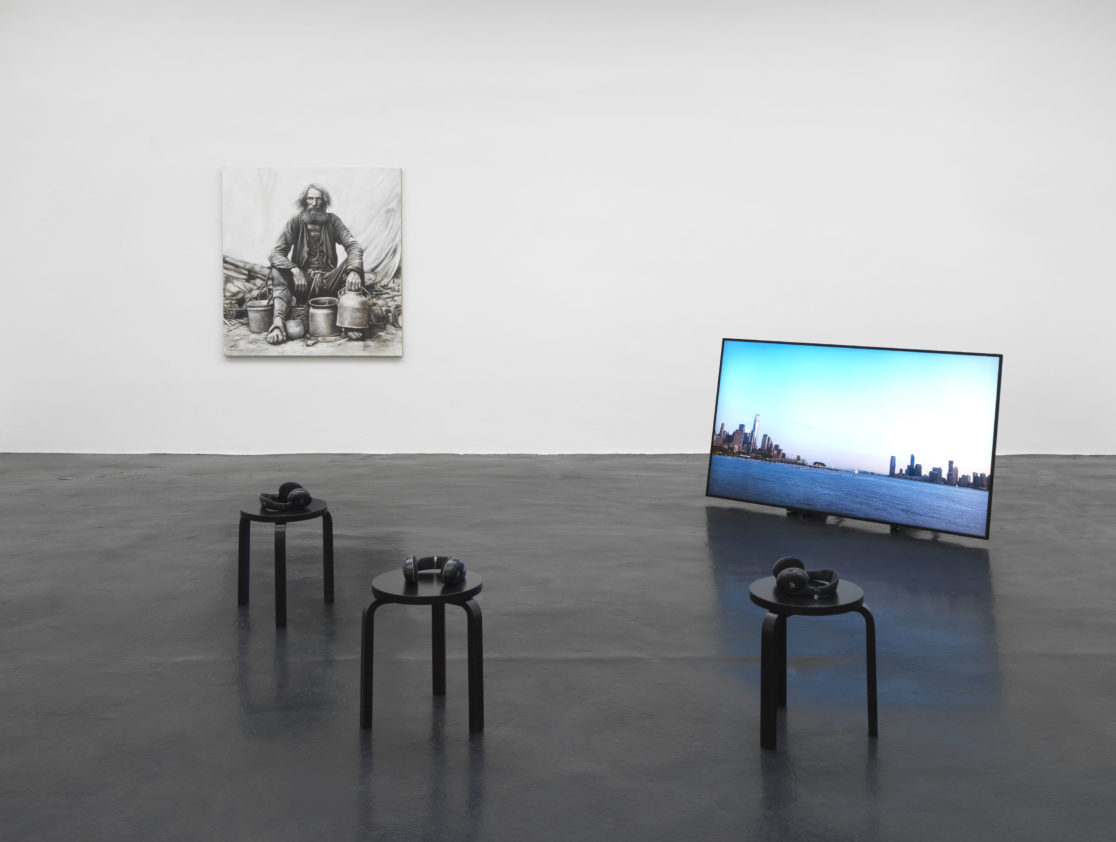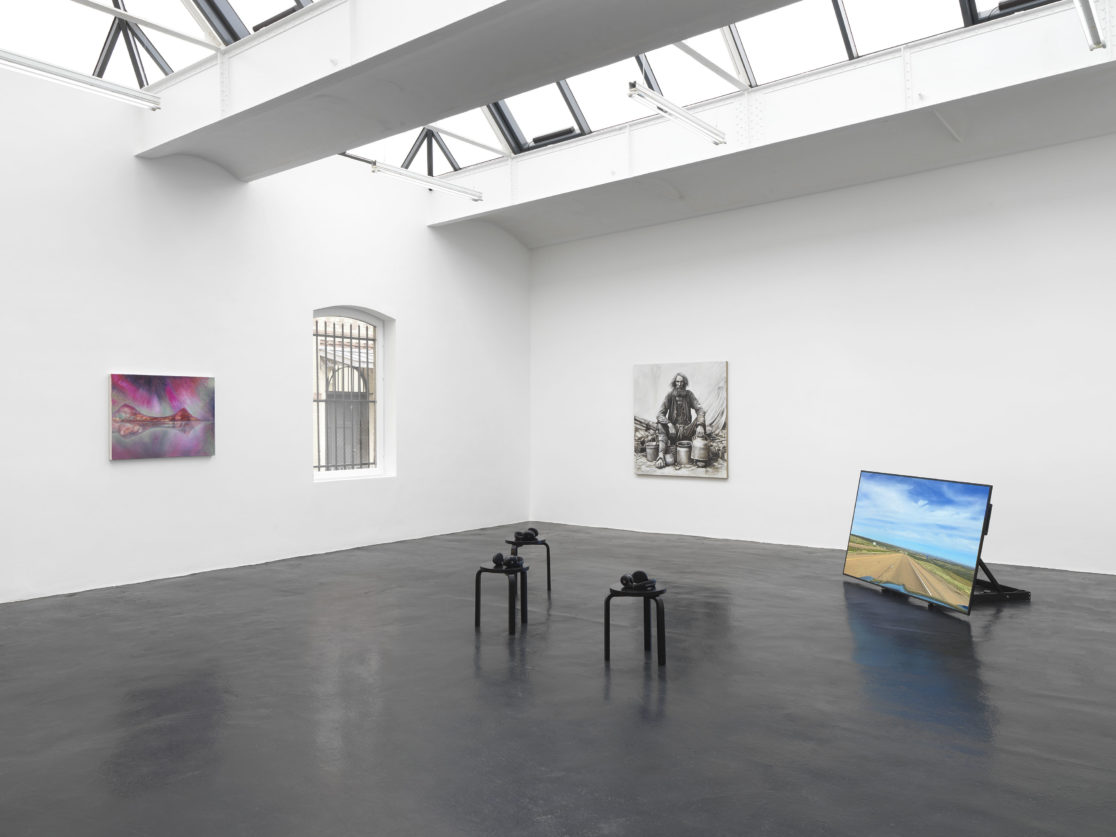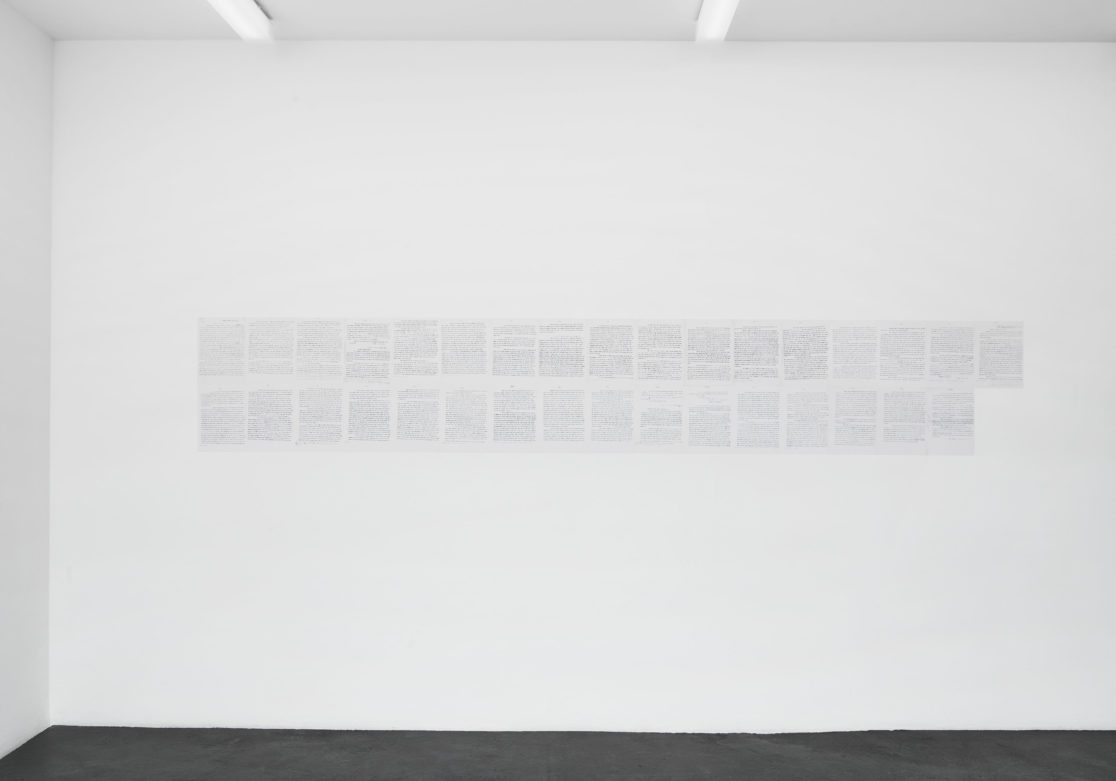The Man who Dissapeared (Amerika)
The Man who Disappeared (Amerika) is a complex of painting, video and documents that traces the mid-19th-century journey of her great-great-great granduncle, artist Georg Pflugradt (later anglicized as Georges Pflugradt), from Leipzig to Los Angeles by way of New York and the California Trail. For this project, developed during her residency at Los Angeles’ Villa Aurora in 2022, she uses his crossing as a means of examining migration and colonial encroachment, illuminating their enduring presences in the current-day North American and European subconscious.
The point of departure for the man who disappeared (amerika) is a set of letters sent by Pflugradt to his parents, siblings and friends – four extended reports, each spanning numbers of months – from between 1848 and 1851. In these transmissions, archival typewritten copies of which are on display, Pflugradt details his group’s excursion over water and land, lending language to the sights, sensations, pleasures and hardships of his trek. A series of paintings by Majewski entitled Unreliable Images (2023) explores potential alternate manifestations of these letters, considering the interface between the read and the seen. Using an artificial-intelligence algorithm that generates pictorial output from prompts – here, vivid fragments from the source letters – and the near-infinite set of existing online imagery, Majewski begins to conceive of the scenes Pflugradt describes as he may have depicted them. She takes these technically driven products of collective memory as foundations to be built upon and modified, their digitally sterilized, ahistorical compositions disrupted and interpreted through her process. The resultant canvases describe a once-idealized land and its lofty promise of a renewed chance at life, considering the nation within the context of its exploitation-driven transformation over the course of centuries at the hands of colonists and fortune seekers. They question German- American identity in pursuit of the motives behind this diaspora, and its parallels to and divergences from present-day migratory stories. By reconstructing the past in a spectacularized mode, she emphasizes the fallibility of recollection and furthers her ongoing interrogation of our relationship to the past.
In her film A Journey in Reverse (2023), Majewski follows her ancestor’s trail by train and automobile, employing as a guide the letters of which she is now steward. Her chronicle is conducted back-to-front, commencing in Los Angeles – the city Pflugradt arrived to in 1850, and in which he likely succumbed to cholera shortly thereafter – and progressing eastward toward New York, where the trip terminates. Moving-image snapshots document her endeavor, standing as testaments to the landscape’s dramatic shift over time, and picturing how native cultures’ sustainable use of land has been replaced by invasive farming practices and fossil-fuel extraction. Majewski herself narrates a translated selection of Pflugradt’s messages throughout A Journey in Reverse, bridging imagery, narrative and era, and extrapolating his prosaic experiences as visual ones. This is complemented by photographs taken in historical museums that line the route – institutions dedicated to North American pioneer history, communicating their messages with through dioramas, displays and surreal accumulations of objects that portray the white settler as heroic, while reducing native populations to afterthoughts. Majewski’s notebook of watercolors, and an 1840 portrait of Pflugradt’s family that depicts him as a child, give physical presence and immediacy to the project’s protagonist.
